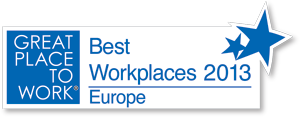- HYGEIA
- Vision & Mission
- Timeline
- Organizational structure
- Press Releases
- Social responsibility
- Awards and Distinctions
- Human Resources
- Scientific & Training activities
- Articles – Publications
- Our Facilities
- Magazines
- Healthcare Programs
- Doctors
- Services
- Medical Divisions & Services
- Imaging Divisions
- Departments
- Units
- Centers of Excellence
- Emergency – Outpatient
- Nursing Service
- Ambulances
- Patients
- Hygeia
- Υπηρεσίες
- Ιατρικά Τμήματα & Υπηρεσίες
Genetic Oncology
To some extent, all people run the risk of developing cancer. Nevertheless, this risk can be quite higher for some individuals who may have inherited a damaged gene. These days, more than 50 such cases have been identified (inherited cancer predisposition syndrome). In the majority of these cases, there is a family history of cancer, meaning that members of the immediate or extended family may have developed some form of cancer. Typically, the cancer develops at a younger age than what is usually the case for each cancer type.
With the right guidance, it is possible these days to detect inherited genetic disorders and consequently diagnose people or families that run a higher risk of developing cancer. By formulating the appropriate prevention strategy, this risk may be minimized, or the cancer may be diagnosed at an earlier stage, in which case it could be fully cured.
It is estimated that 5-10% of cancer patients have an inherited genetic disorder. Moreover, 20% of cancer patients have a family history of cancer, which, however, cannot be attributed to any of the known genetic disorders.
Genetic oncology makes it possible:
- To provide guidance and advice to patients and their families for detecting such genetic disorders (mutations) based on their personal and family history of cancer, as well as other conditions or ailments
- To provide guidance for proper genetic testing
- To select the family member with the highest chance of having a pathogenic mutation
- To formulate a personalized strategy for preventing and reducing the risk when a hereditary pathogenic mutation has been detected, taking into account the patient’s individual traits
- To provide guidance and advice to the rest of the family members, who should be tested when a pathogenic mutation has been detected in another family member
Hereditary Risk Assessment – Genetic Oncology Consultation
The assessment aims at:- Understanding the concept of inheritance
- Understanding the relationship between genes and cancer development
- Analyzing and investigating in depth the patient’s personal and family medical history (e.g. biopsy findings, endoscopic findings, etc)
- Correlating possible syndromes that may be responsible for the medical history and calculating the possibility of finding a mutation
- Providing guidance with regard to matters such as which genes should be assessed, in which order and which family member should be assessed first
What you must bring with you on your first visit?
- Histology (anatomical pathology) reports of biopsies or surgical procedures
- Mammograms
- Gastroscopy/colonoscopy results
- Imaging test results (CT-scans, MRIs, X-rays, U/S)
- Expert medical opinions/operative reports
- Assessment of hereditary predisposition for malignant tumors
- Management of hereditary predisposition for malignant tumors
- Genetic counselling for malignant tumors
What are genes?
Genes form part of larger molecules within a chemical substance known as DNA (Deoxyribonucleic acid). There are approximately 300,000 genes present in each human being, and each of these genes determines a specific structure or function of the body. For instance, one’s eye color, skin tone or height is determined by the relevant genes. In some cases, environmental factors may also alter the final result to some extent (i.e. although skin color is determined by the genes, it may be altered by sun exposure). Finally, there are some genes that are responsible for functions which, if disrupted, may lead to cancer.What is the significance of hereditary cancer history in family members?
The proper assessment of a patient’s medical history may lead to the detection of a genetic disorder which is responsible for this history. As a consequence, family members who carry this gene may have an increased predisposition to cancer. If they become aware of this predisposition, they can take the appropriate prevention measures.What is the significance of the family history for the patients?
The most common inherited cancer syndromes significantly increase the possibility of the patient developing a second cancer of the same type (e.g. a second cancer in the same or the other breast, a second colon cancer in another part of the colon, etc). Recent scientific studies have shown that some drugs could be particularly effective in hereditary cancers. Clinic studies are currently assessing this prospect.When is the risk of developing cancer higher? Which family members are most vulnerable?
The typical signs of cancer are:- Multiple cancers in family members (e.g. father and uncle, or father and brother with colon cancer)
- Combination of specific types of cancer in the same patient or in family members (e.g. colon and endometrial cancer, breast and ovarian cancer or pancreatic cancer and intestinal polyps)
- Combination of cancer or precancerous conditions with unusual characteristics (e.g. large head circumference and breast cancer, colon cancer and sebaceous gland adenomas)
- More than one cancer in the same patient (e.g. breast cancer at 48 and ovarian cancer at 55)
- Cancer at a relatively young age (e.g. breast cancer at 38 or colon cancer at 45)
- Unusual subtypes of cancer (e.g. myeloid thyroid cancer, adrenal gland cancer or retinoblastoma)
What types of cancer does it involve?
The most common inherited syndromes involve breast cancer, colon cancer and digestive system cancer, as well as gynecological cancers (usually ovarian/fallopian tube and uterine cancer). However, a large percentage of many other types of cancer affecting larger organs can increase inherited predisposition: endocrine (e.g. thyroid), urinary tract and brain malignancies, leukemia, sarcomas, etc. More than 50 such syndromes have been identified to date and despite being rare, they do exist and they increase the risk of patients developing a multitude of neoplasms.Is there a way to prevent cancer when an inherited predisposition has been detected?
Today, there are prevention strategies available (such as breast MRI for hereditary breast cancer) that may diagnose cancer even before it causes any symptoms or before the patient becomes aware of it. It has been documented that early stage diagnosis can significantly increase the chances of full recovery.
Moreover, other interventions are available, such as drugs that reduce cancer occurrence (e.g. tamoxifen reduces the risk of breast cancer). There are also more radical interventions available, such as prophylactic removal of an organ before cancer develops, when it is has been established that there is a very high risk of cancer occurrence. These strategies are widely accepted in countries such as the USA.
Finally, in cases of family cancer history which are not due to a relevant genetic disorder, personalized prevention recommendations are made to the healthy family members.What does that presence of a mutation in a gene mean?
Once a pathogenic mutation has been detected, the carrier of this mutation runs a significantly higher risk of developing cancer. For example, in BRCA1 mutation carriers, the risk of developing breast cancer can reach up to 80% until the age of 70, while the risk of developing ovarian cancer reaches 40%. In Lynch syndrome carriers, the risk of developing colon cancer can reach up to 80% and uterine cancer up to 60%, until the age of 50. Contact Us
Contact Us4th floor
Οffice 7Telephone
+30 210 686 7163
Fax
+30 210 686 7163Medical Team
- Director
-
 Lypas Georgios
Lypas Georgios - Attending Physician
-
 Veros Christos
Veros Christos
- © 2007-2025 HYGEIA S.M.S.A.
- Personal Data Protection Policy
- COOKIES Policy
- Terms of Use
- Privacy Policy
- Credits
- Sitemap
- Made by minoanDesign
Ο ιστότοπoς μας χρησιμοποιεί cookies για να καταστήσει την περιήγηση όσο το δυνατόν πιο λειτουργική και για να συγκεντρώνει στατιστικά στοιχεία σχετικά με τη χρήση της. Αν θέλετε να λάβετε περισσότερες πληροφορίες πατήστε Περισσότερα ή για να αρνηθείτε να παράσχετε τη συγκατάθεσή σας για τα cookies, πατήστε Άρνηση. Συνεχίζοντας την περιήγηση σε αυτόν τον ιστότοπο, αποδέχεστε τα cookies μας.
Αποδοχή όλων Άρνηση όλων ΡυθμίσειςCookies ManagerΡυθμίσεις Cookies
Ο ιστότοπoς μας χρησιμοποιεί cookies για να καταστήσει την περιήγηση όσο το δυνατόν πιο λειτουργική και για να συγκεντρώνει στατιστικά στοιχεία σχετικά με τη χρήση της. Αν θέλετε να λάβετε περισσότερες πληροφορίες πατήστε Περισσότερα ή για να αρνηθείτε να παράσχετε τη συγκατάθεσή σας για τα cookies, πατήστε Άρνηση. Συνεχίζοντας την περιήγηση σε αυτόν τον ιστότοπο, αποδέχεστε τα cookies μας.







































